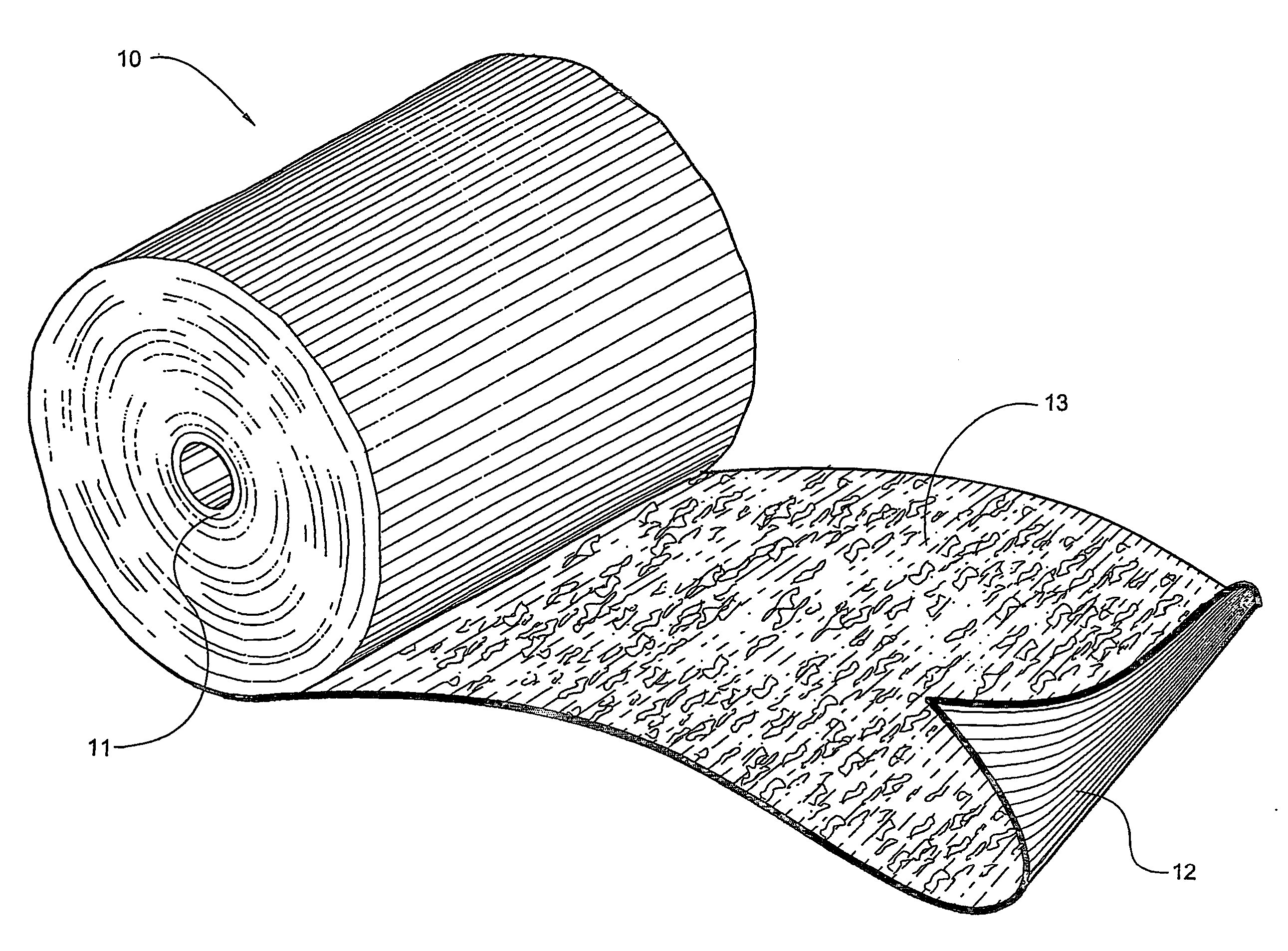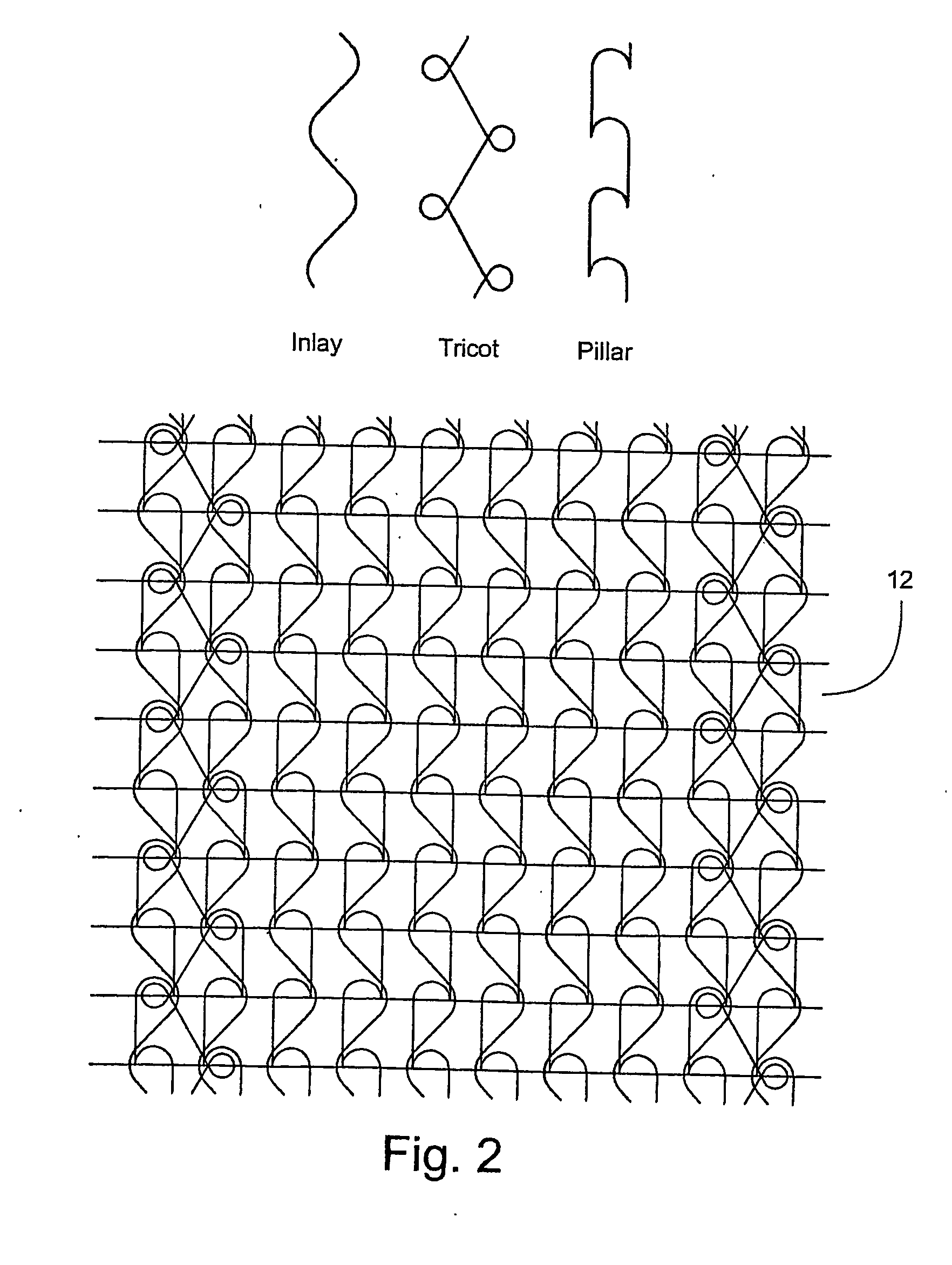Weft-inserted elastic adhesive bandage and method
a technology of elastic adhesive and bandage, which is applied in the field of orthopedic medicine, can solve the problems of poor conformability high cost of manufacture of such elastic adhesive bands, and difficulty in maintaining stretch and recovery properties of prior art fabrics, etc., and achieves the effect of less expensive cost and improved conformability
- Summary
- Abstract
- Description
- Claims
- Application Information
AI Technical Summary
Benefits of technology
Problems solved by technology
Method used
Image
Examples
Embodiment Construction
[0034] Referring now specifically to the drawings, an elastic bandage according to the present invention is illustrated in FIG. 1 and shown generally at reference numeral 10. The bandage 10 is wound onto a core 11 to form a roll. The bandage 10 includes a warp-knitted substrate 12 with an adhesive 13 coated onto one side. The adhesive 13, which may be a coadhesive, i.e., it adheres to itself but not as well to other substances, provides sufficient adherence to maintain the integrity of the roll. Appropriate amounts are dispensed as needed by pulling a length of bandage 10 off of the roll and severing the length from the bandage 10 remaining on the core 11. The removed length of bandage 10 is then applied to a limb in a conventional manner.
[0035] The fabric substrate 12 is a compression support fabric comprising a weft-inserted substrate constructed such that elasticized and inelastic yarns are arranged in an alternating elastic and non-elastic pair, woven in the form of a chain sti...
PUM
| Property | Measurement | Unit |
|---|---|---|
| elongation | aaaaa | aaaaa |
| thickness | aaaaa | aaaaa |
| extensibility | aaaaa | aaaaa |
Abstract
Description
Claims
Application Information
 Login to View More
Login to View More - R&D
- Intellectual Property
- Life Sciences
- Materials
- Tech Scout
- Unparalleled Data Quality
- Higher Quality Content
- 60% Fewer Hallucinations
Browse by: Latest US Patents, China's latest patents, Technical Efficacy Thesaurus, Application Domain, Technology Topic, Popular Technical Reports.
© 2025 PatSnap. All rights reserved.Legal|Privacy policy|Modern Slavery Act Transparency Statement|Sitemap|About US| Contact US: help@patsnap.com



